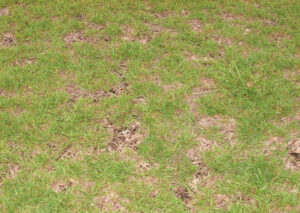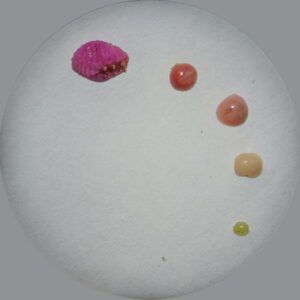The Type of Pearls No One Wants
go.ncsu.edu/readext?1069947
en Español / em Português
El inglés es el idioma de control de esta página. En la medida en que haya algún conflicto entre la traducción al inglés y la traducción, el inglés prevalece.
Al hacer clic en el enlace de traducción se activa un servicio de traducción gratuito para convertir la página al español. Al igual que con cualquier traducción por Internet, la conversión no es sensible al contexto y puede que no traduzca el texto en su significado original. NC State Extension no garantiza la exactitud del texto traducido. Por favor, tenga en cuenta que algunas aplicaciones y/o servicios pueden no funcionar como se espera cuando se traducen.
Português
Inglês é o idioma de controle desta página. Na medida que haja algum conflito entre o texto original em Inglês e a tradução, o Inglês prevalece.
Ao clicar no link de tradução, um serviço gratuito de tradução será ativado para converter a página para o Português. Como em qualquer tradução pela internet, a conversão não é sensivel ao contexto e pode não ocorrer a tradução para o significado orginal. O serviço de Extensão da Carolina do Norte (NC State Extension) não garante a exatidão do texto traduzido. Por favor, observe que algumas funções ou serviços podem não funcionar como esperado após a tradução.
English
English is the controlling language of this page. To the extent there is any conflict between the English text and the translation, English controls.
Clicking on the translation link activates a free translation service to convert the page to Spanish. As with any Internet translation, the conversion is not context-sensitive and may not translate the text to its original meaning. NC State Extension does not guarantee the accuracy of the translated text. Please note that some applications and/or services may not function as expected when translated.
Collapse ▲Ground pearls (Margarodidae) are one of the most invasive lawn pests in Brunswick County, wreaking havoc on lawns across our coastal communities. Often misdiagnosed, these pesky small scale insects can cause irreversible damage.

Cysts are the waxy balls produced by immature ground pearls for protection against the environment and natural enemies. Cysts also inhibit the contact of insecticide solutions with the ground pearls. Photo by Meg Williamson, Clemson University Plant and Pest Diagnostic Clinic
Have you resodded your lawn only to have the same dead bare areas? Do you have dying-out areas in your lawn and have treated with fungicide/insecticide with no relief? These may be your lawn’s issue! Centipede is the most susceptible grass type since its growth is the slowest, with Zoysia as a close second with damage. While well maintained, Bermuda grass is the least affected and our recommendation for lawn replacements. There are no chemical or mechanical controls to this pest recommended by N.C. State University at this time, making changing turf types one of the only options.
Searching for ground pearls is fairly simple. Find the transition zone where the healthy turf and dead areas meet and dig a 4″-6″ hole in the soil. Normally you can find them in the rootzone of the turfgrass, they’re smaller than the size of a BB. They are shiny yellow in the springtime during their nymph stage. During the summer they have grown to adulthood and are bright pink and easy to spot.
If you need help determining if you have ground pearls or not, bring some samples of your soil by to our office at N.C. Cooperative Extension – Brunswick County Center 25 Referendum Dr, Building N, Bolivia, NC 28422
Please call (910) 253-2610 for more information.




